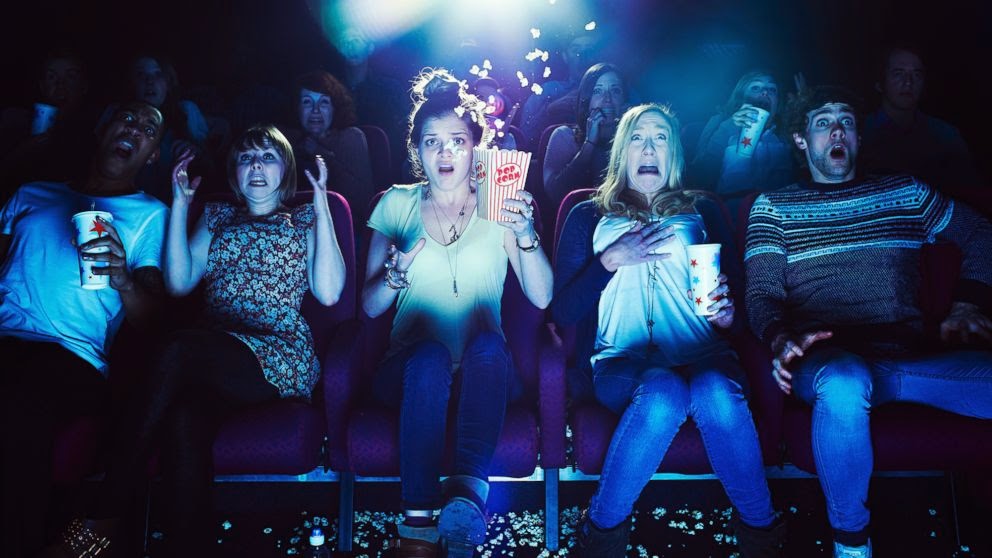Audiences love to scream in terror at the
scenes presented to them on the big and small screen. But why do we seek out
scary experiences? Why do we shield our eyes in fear only to return them to the
screen seconds later? What sadistic tendency leads us to self-scare?
The answer lays in our body chemistry, or more
specifically our brain chemistry. In a fight-or-flight scenario our brain
releases the hormone dopamine. Dopamine has many purposes in the human body,
but one of the major roles it plays is reward. Our body rewards us with
dopamine when we preform certain actions, the most basic being smiling. Our
reward is happiness.
In a scary scenario, our brain also rewards our
'fight' option with an increase in the production of dopamine. By sitting
through a disturbing scene our body experiences a jolt of hormones. This
produces feelings similar to those created when we experience a euphoric
situation.
Our self-esteem gets a boost as our confidence
increases. Our survival, even when witnessing a two-dimensional scene, is seen
as an action worthy of a chemical prize. The more scary scenarios we can sit
through the greater our self -worth.
But scares aren't for everyone. Our enjoyment
depends on the milliseconds between the fright and our brain's recognition that
as viewers, we are in a safe place. If we aren't sure of our safety, we will be
less likely to enjoy the experience.
The Krakit Escape Room has similar boundaries.
If we feel safe during the experience, then we can enjoy the act of being
scared. We feel elated if we are able to solve the puzzle.
Some individuals find safety in numbers and
have a far more enjoyable experience when attempting to escape in a large
group.
And then there's some who don’t like to be
scared at all. Luckily for this group, Krakit has a new theme that has close to
zero chills.
Come try one of our four challenges this
week.



No comments:
Post a Comment